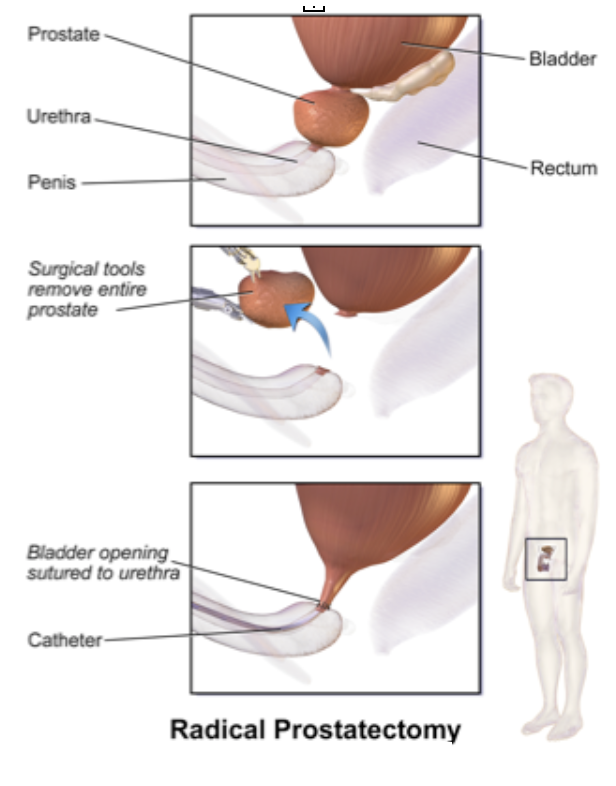Radical Prostatectomy
Most often, Radical Prostatectomy is done to treat localised Prostate cancer. It may be used alone, or in conjunction with Radiation, chemotherapy and hormone therapy.Radical prostatectomy options to treat prostate cancer includeOpen radical prostatectomy, laparoscopic radical prostatectomy And robot-assisted radical prostatectomy.
RISKS
These are the commoner risks. There may be other unusual risks that have not been listed here. Please ask you surgeon if you have any general or specific concerns.There are risks associated with any anaesthetic, you may have side effects from any drugs used. The commoner side effects include light-headedness, nausea, skin rash and constipation.
In addition to the risks associated with any surgery, risks with radical prostatectomy include:
- Bleeding
- Urinary tract infection
- Urinary incontinence
- Erectile dysfunction (impotence)
- Injury to the rectum (rare)
- Narrowing (stricture) of the urethra or bladder neck
- Formation of cysts containing lymph (lymphocele)
Some of the above risks are more likely if you smoke, are overweight, diabetic, have high blood pressure or have had previous heart disease.
After surgery you should expect that:
- You'll be given intravenous (IV) pain medications. Your doctor may give you prescription pain pills to take after the IV is removed.
- Your doctor will have you walk the day of or the day after surgery. You'll also do exercises to move your feet while you're in bed.
- You'll likely to go home 5 days after surgery. When your doctor thinks it's safe for you to go home, the pelvic drain is taken out. You may need to return to the doctor in one or two weeks to have staples taken out.
- You'll return home with a catheter in place. Most men need a urinary catheter for 14 days after surgery.
- Make sure you understand the post-surgery steps you need to take, and any restrictions.
- You’ll need to resume your activity level gradually. You should be back to your normal routine in about four to six weeks.
- You won’t be able to drive for at least 6 weeks after going home. Don’t drive until your catheter is removed, you are no longer taking prescription pain medications and your doctor says it’s OK.
- You’ll need to see your doctor a few times to make sure everything is OK. Most men see their doctors after about six weeks and then again after a few months. If you have problems, you may need to see your doctor sooner or more often, although it’s unlikely.
- You’ll probably be able to resume sexual activity after recuperating from surgery. After simple prostatectomy, you can still have an orgasm during sex, but you’ll ejaculate very little or no semen.
When you are discharged, take care of the following:
- Prevent constipation
- Maintain high fluid intake: water, coffee, tea – normal diet
- Avoid lifting anything heavy
- Avoid driving of being driven in a vehicle. Limit mobility
- Try not to sit or walk too much, especially during the first 3-4 weeks
- Monitor would site for abnormal redness/swelling – report changes immediately
- Notify your doctor if your temperature reaches 38°C or higher (hot flushes/shivers)
- You will go through a bladder rehabilitation period until sufficient control is gained. There may be a measure of incontinence, this condition can be cleared up with medicine and exercise.
- Complete your prescribed medication
- A leg bag and night urine bag will be supplied with the necessary information on how to use them
- Catheter care with water and soap to be done at home until the removal of the catheter
Please call the doctor if you experience any of the following:
- Excessive blood in urine
- Redness, swelling, offensive wound smell or odour
- Leakage of urine at the catheter due to bladder spasms
- No urine drainage through the urethral catheter
- fever
